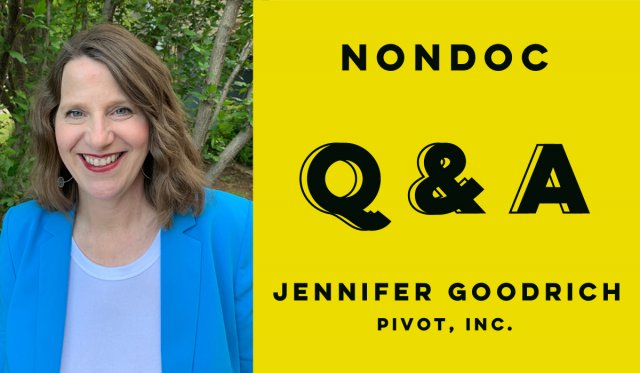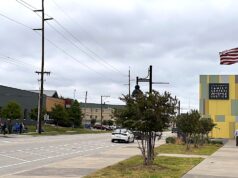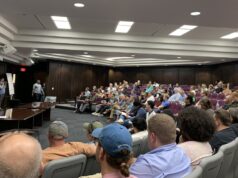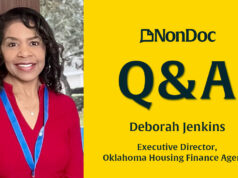(Editor’s note: The following piece is presented as part of an advertising package purchased by Blue Sky Bank and gifted to Pivot, Inc. in 2019.)
Pivot works with young people lacking stability in their lives. They are sometimes homeless or couch homeless, alone or disengaged. Many live with damaging labels and shame. Almost all are ages 12 to 21 and have overwhelming barriers in their lives without the resources to overcome them and successfully transition into self-reliant adults.
In this Q&A, Pivot CEO Jennifer Goodrich discusses her 20 years with Pivot and what people need to understand about childhood trauma.
What is the history of Pivot?
Established in 1972 and formerly called Youth Services of Oklahoma County, Pivot’s original services included crisis intervention, individual and family counseling and referrals. Over the last 40 years, our programs and services have expanded to better meet the needs of youth in our community.
Services now include:
- Emergency shelter for homeless or displaced youth
- Independent living services
- Education support and job assistance
- Life skills training and practice
- Mentoring
- Mental health services
- Prevention and intervention programs provided to youth and families
We also operate the Community Intervention Center, partnering with law enforcement to process and support youth involved in the justice system. Pivot’s services are trauma-informed and trauma-responsive. We try to stay proactive as we adapt to meet the growing (and changing) needs of youth and teens in our community. Our first three tiny homes for youth are complete and now provide stable housing for youth transitioning into adulthood. Our next project is a drop-in center and overnight shelter to better support homeless youth in the metro.
What are some of the main challenges you face while trying to carry out your mission?
Public awareness that there are homeless or struggling youth and teens. And public awareness that our organization exists to support them. There’s a stereotype of what we think homelessness looks like. We assume that kids in need will be assisted through other systems. Both assumptions are false — there are youth and teens trying to make it on their own every day in our community. They may look and act like every other kid in school, but they are struggling to meet their needs or plan for their future.
How can the public help your cause?
As a non-profit, we obviously depend on donations to sustain our operations. Both financial donations and basic food and hygiene items allow us to support youth. But we also rely on engaged volunteers. People can share their time and talents in a variety of ways to positively impact the lives of youth in our community.
If you have youth or teens in your life, talk to them. Ask about their friends or classmates. If you think they are in a situation where they could use some support, please feel free to refer them to Pivot. We are thrilled to see how we may be able to help.
Tell us about you and how long you’ve been with Pivot. What are some of the major societal changes you’ve seen over the years?
I celebrated my 20th year with Pivot on Nov. 1. I have served in all different capacities from clinical director to therapist, to vice president of programs and now president and CEO. The biggest changes I’ve seen in those years involve recognizing the impact of trauma and the integration of services.
We have long known that traumatic experience has a profound impact on a young person’s development, but the understanding of how it specifically impacts someone (health outcomes, maladaptive behaviors, what PTSD looks like, living in fight, flight or freeze) has become a topic of conversation. People’s capacity to understand is increasing, and the willingness to not just say “what’s wrong with you” but “what happened to you” is changing the way we serve others. For Pivot, an infusion of that understanding at every level has advanced the type of services we provide. At the heart of it is connecting with others, validating their experiences and empowering them by meeting their needs.
Trauma isn’t the end of the story, it’s the beginning. It allows us to work in collaboration with people to help them build resiliency in areas that have the most impact on their lives. Integration of all of our services allows young people to have access to meet their needs, regardless of referral source. It also allows us to not only focus on the tasks they need to complete (school, find a job, meet basic needs), but we can also get to the “why” behind their circumstances and choices with individualized and goal-directed mental health services.
Adverse childhood experiences (or ACEs) are receiving more attention lately owing to their potential long-term impacts on a person’s health. What can be done to help address ACEs faced by our youth?
The more people understand it, examine their own experience, and are willing to see the trauma behind the symptomatic behavior, the better we can get to the heart of their experience. So many youth who learn about ACE scores and what the potential consequences are find a sense of relief because they get to learn that their approach to those trauma experiences was born out of survival. It gives them a new understanding of why they do what they do and why they feel what they feel. These are not excuses. People are still responsible for their behavior. But they are explanations and provide context.
Once you have that context, you begin to have a sense of control over what choices you make after that. Most of the problems we experience today can be traced back to trauma — personal, generational, community and more. To be the one in your family who is willing to feel the pain by facing the trauma is a not an easy choice, but it is a powerful one. Youth can’t do that on their own, it takes us all to recognize it and connect them with the resources they need to address it.
If you could have a super power, what would it be?
I would educate everyone on trauma, how to recognize it and how to respond to it. I would help them see that a kid with his head down on his desk asleep isn’t necessarily defiant. Maybe it’s the only safe place he can sleep. If a child is yelling in your face, it’s fear and that’s how they survive. When a teen runs away, that can be a survival skill they’ve picked up along the way. If they shut down, it’s to protect themselves. I think most adults may see themselves in some of the same behaviors.
I want to encourage anyone who is willing to connect to a young person, just be the one adult that doesn’t focus on what they’re doing wrong, but get to the heart of what they feel. You must understand that any time you just say “no,” you’ve missed an opportunity to teach them something.






















